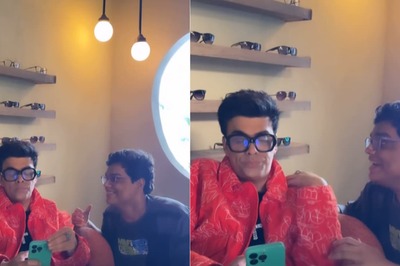
views
It all began as an adventure for Mira who had a penchant for colours and fabrics since she was a teen. But of course, she knew nothing about the nitty-gritty involved, and once she got married into a business family, it was all but forgotten.
“I had two children by then, and I stayed in this big joint family where women did not work outside,” says Mira, who went on to become one of the most prominent faces of the handloom industry.
“Around that time my husband’s cousin sister who was staying in Maheshwar (in Madhya Pradesh) suggested that I come there and have a look at the work carried out by the weavers. It is a tiny village where the locals speak in a very sweet language - a mix of Marathi and Gujarati. At that time there were not more than a few hundred looms in the village. That number today runs into thousands. Such has been the growth in handlooms! Both me and my sister-in-law bought several saris from that trip and then sold it in Mumbai where I live. It was good pocket money. It meant nothing more,” she recollects.
She made a few more trips to Maheshwar, and showcased the collection in an exhibition held in Mumbai. It was an instant hit. That’s when Rehwa Society of Maheshwar - one of the prime players in handloom - approached her and asked her to join them. “I used to work part time, assist in colour schemes...but it was never a serious occupation,” she recollects.
Then a personal tragedy struck and Mira lost her husband suddenly. “He had a heart attack and I was just 35 then. That’s when my work started assuming importance. I needed the money too.”
Mira now was no longer just cursorily involved with Rehwa Society, and in the next 20 years she came to become its most public face. She now looks with satisfaction at the role Rehwa played in the overall growth and revival of the handloom industry.
Six months ago Mira decided to ‘move on’ from the organisation that she had nurtured for so many years. She puts it down to circumstances. But not one to be discouraged, she swiftly moved on and decided to go solo. Her contacts by then were very strong in Maheshwar, the locals knew her and in quick time she set up 60 looms.
“Maheswaris are sheer and elegant in appearance. They are a mixture of two yarns - fine silk and cotton. The amount of silk and cotton used in each clothing can wary, like mine that has more silk in it,” she says running her hands through her beautiful red sari.
Mira today also has two major stores in Mumbai, one of which is run by her daughter. Every day Mira steps into her office at the store wearing one of her finely hand-crafted saris, and the compliments invariably pour in. “In a place like Kerala, the trend of wearing saris is still alive. Not so in Mumbai, which is why customers invariably stop and ask me about the stuff I wear. I hope to revive the trend of saris in Mumbai,” she says.
Handloom and khadi that once symbolised Gandhian austerity is today a niche industry, patronised by the fashionable arty population, willing to shell out thousands for its exclusivity. Mira notes how she sells khadi saris worth a lakh even! To what does she attribute such a sea change in the fortunes of the handloom industry. “I think many people have been instrumental in shaping the image of Maheshwar. Rehwa Society has been one of them, there are others too. There is plenty of innovation that is happening and obviously the living standard of the weavers has drastically improved,” she says.
On the high price, she says, “That’s because many of us use only the best of yarn and colours. Then many hire designers. All that hikes up the price,” she says.
24 years after Mira first ventured into the world of handlooms, her passion remains undiminished. As she sits at Kochi’s Tamanna store at Panampilly Nagar, which is exhibiting her collection of dupattas, salvar suits and saris, she warmly praises the Keralaite taste in clothes. There is talk with the store owner, the pretty Shirin, on what places they could visit in picturesque Kochi. Mira is vaguely interested, but primarily she has only work on her mind. Single-minded as ever, Mira is awkward about media attention. She goes into a futile search looking for her visiting card in her hand bag, and her Facebook account is a recent one. “I’m happiest working behind-the-scenes with handlooms. Nothing excites me as much,” she smiles.




















Comments
0 comment